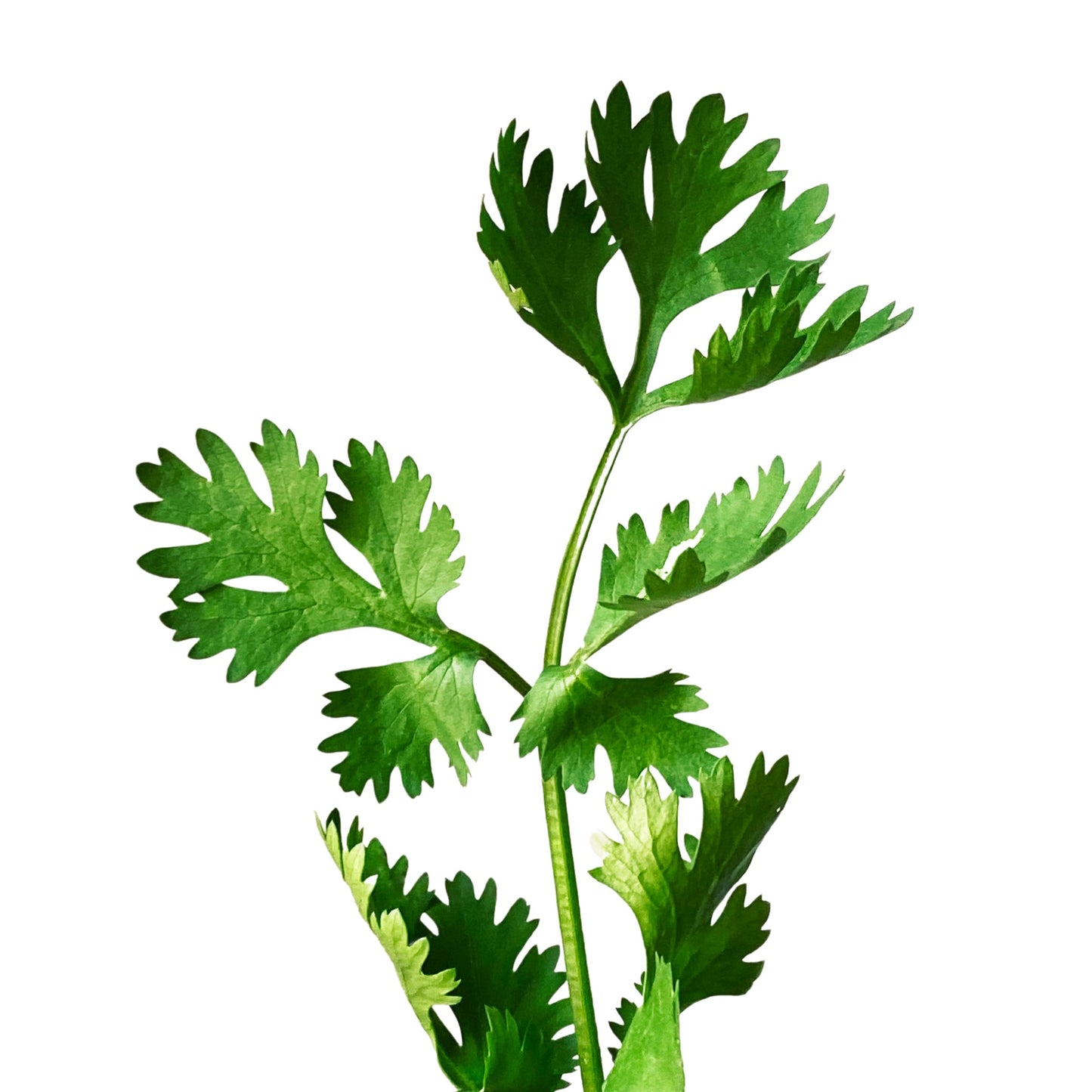JONQUIL
Coriander - 50 Seeds
Coriander - 50 Seeds
Couldn't load pickup availability
Coriander, also known as cilantro in its leaf form, is a popular herb used in various cuisines around the world. Here's a detailed overview of coriander, including its uses, growing tips, and nutritional benefits:
Description
Botanical Name: Coriandrum sativum
Parts Used: The leaves (cilantro), seeds (coriander seeds), and roots (used in some Asian cuisines).
Flavor Profile: The leaves have a fresh, citrusy flavor, while the seeds have a warm, spicy, and slightly sweet flavor.
Culinary Uses
Fresh Leaves (Cilantro): Commonly used in salads, salsas, and as a garnish in dishes like tacos, curries, and Asian stir-fries.
Seeds (Coriander): Used whole or ground as a spice in various dishes, including spice blends, pickles, and baking.
Roots: Used in some Southeast Asian cuisines for a deeper flavor in curries and pastes.
Nutritional Benefits
Vitamins and Minerals: Coriander is rich in vitamins A, C, and K, as well as minerals like potassium and manganese.
Antioxidants: Contains antioxidants that may help combat oxidative stress in the body.
Health Benefits: Traditionally used for its potential digestive benefits and to alleviate symptoms like bloating.
Growing Coriander
Coriander is relatively easy to grow and can be cultivated both indoors and outdoors. Here are some tips:
Climate: Prefers cooler temperatures; ideal for spring and fall planting. It can bolt (flower) in high heat, which affects leaf quality.
Soil: Grows best in well-draining soil rich in organic matter with a pH of 6.2 to 6.8.
Planting:
Sow seeds directly in the garden 1 cm deep, or start seeds indoors and transplant after the last frost.
Space seeds about 15 cm apart, allowing room for the plants to grow.
Watering: Keep the soil consistently moist, but avoid waterlogging. Water regularly, especially during dry spells.
Sunlight: Needs full sun (at least 6 hours of direct sunlight daily), but can tolerate partial shade, especially in hotter climates.
Harvesting:
For leaves, harvest when the plants are about 18cm tall. Cut leaves from the outer parts of the plant.
For seeds, allow the plant to flower and then dry. Once the seeds turn brown, cut the heads and store them in a paper bag to finish drying before collecting the seeds.
5. Pest and Disease Management
Common Pests: Watch for aphids, spider mites, and whiteflies. You can use insecticidal soap or neem oil as needed.
Diseases: Be aware of root rot and fungal diseases, particularly in overly wet conditions. Good air circulation and proper watering can help mitigate these issues.
6. Storage
Fresh Leaves: Store cilantro in the refrigerator wrapped in a damp paper towel or standing upright in a glass of water (like a bouquet) covered loosely with a plastic bag.
Dried Seeds: Store coriander seeds in an airtight container in a cool, dark place.
Coriander is a versatile and flavorful herb that enhances many dishes and offers various health benefits. If you have any specific questions or need more information, feel free to ask!
Share


